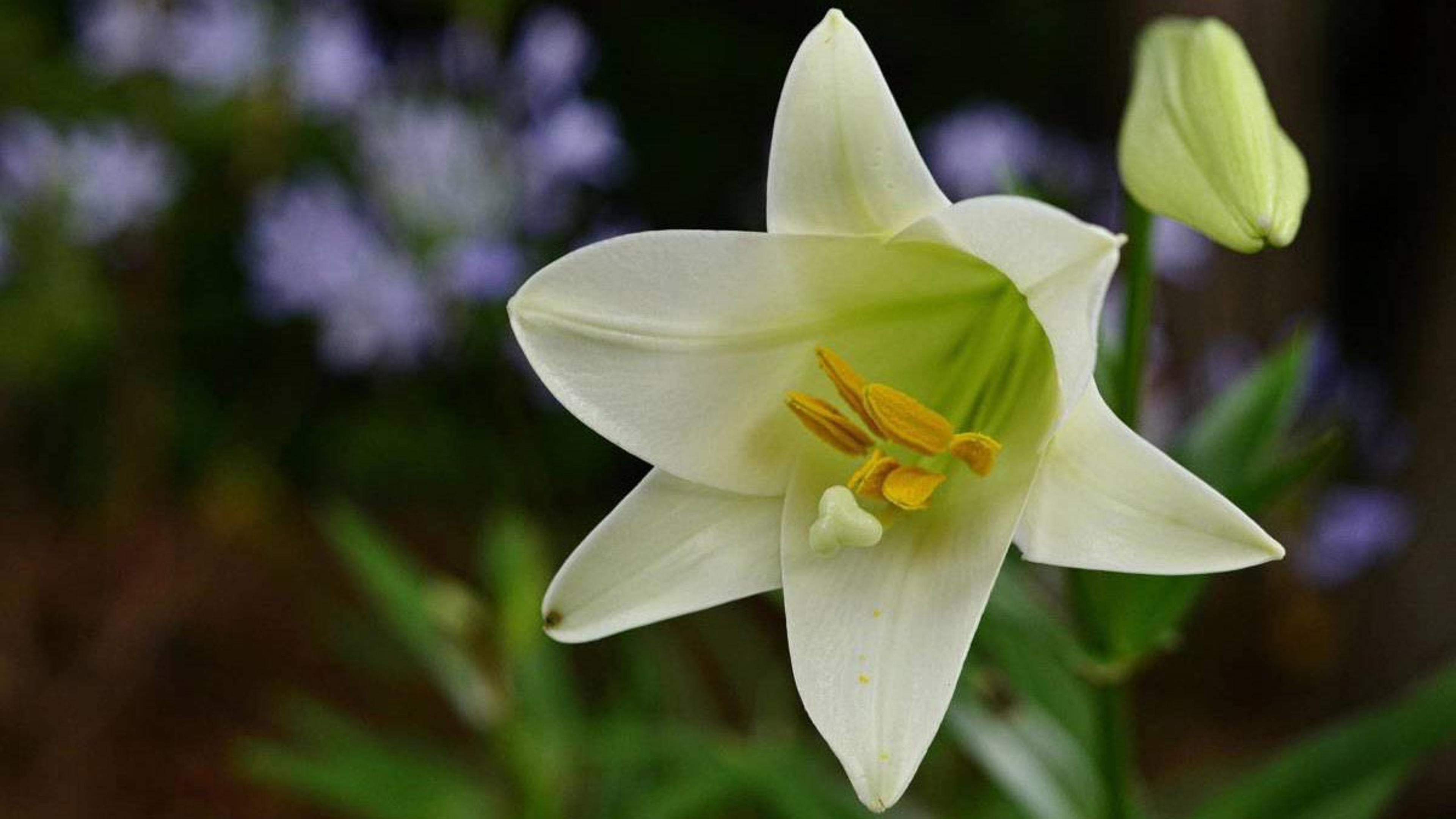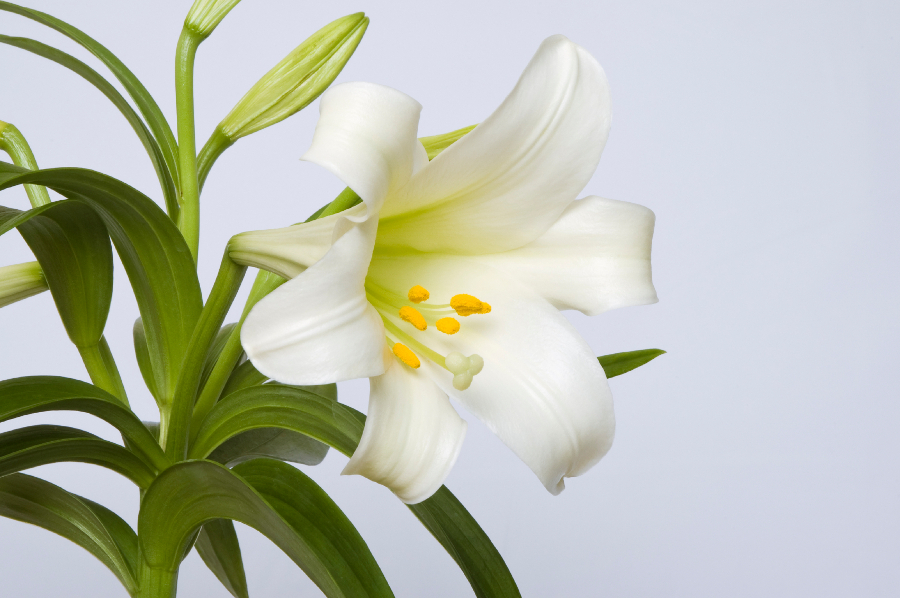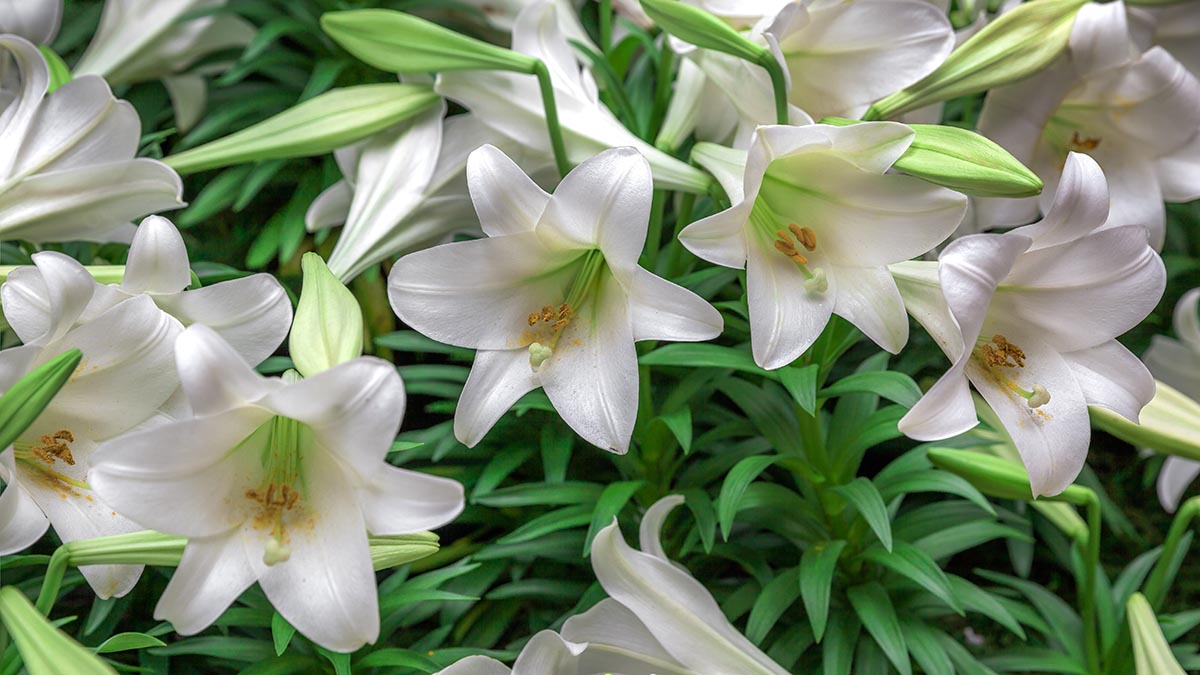How to Care for an Easter Lily Plant
These expert tips will keep your plant happy and healthy.
Mar 16, 2023
Spring is the time when early-blooming bulbs begin to appear in garden centers and stores. The exquisite and highly fragrant Easter lily is royalty among them and carries a rich cultural and spiritual history.
This white lily often symbolized the purity of motherhood in pagan religions and was mentioned many times in the Bible, where it represented purity, rebirth, hope, and the resurrection of Christ. It has become a traditional Easter and springtime flower, seen in churches and homes to celebrate the season.

Easter lilies are native to the Ryukyu Islands of Japan. They were brought to the United States in 1880 and, at that time, were produced for sale in the southern U.S. and Japan. Their value increased during World War II when the supply of bulbs from Japan came to a halt and their production moved to the West Coast. Today, most of the world's potted Easter lilies are produced in an area near the border of California and Oregon.
How to choose an Easter lily
Easter lilies are 2 to 3 inches tall with pure white to pinkish, trumpet-shaped flowers atop stiff stems adorned with dark green, lance-shaped leaves. When shopping for a lily, you will have many to choose from, often with colorful foil around their pots. Picking a good one takes a trained eye, so you'll want to follow this guide to make the best selection.
Choose a plant that has:
- A strong, dark green stem
- Foliage that extends down the stalk
- Lots of tight, green buds, and at least one open flower
Don't choose a plant if it has:
- Drooping or brown buds
- Holes or spots on the leaves
- Signs of insect pests: stippling on the leaves, webbing
- Crinkled, folded, or distorted leaves
- A soft, spongy, or yellowed stem
How to care for a potted Easter lily indoors
Now that you've picked out a beautiful Easter lily, you'll want to help it thrive so it can enhance your home for as long as possible. That means making sure it gets the right light, temperature, humidity, and amount of water to keep it happy and healthy.

Light
Give your plant plenty of bright, indirect light, but do not keep it in the direct sun — that can scorch its flowers and foliage, and shorten its lifespan.
Temperature and humidity
Cool temperatures will extend the life of your plant. An Easter lily does best in 60-to-70-degree temperatures during the day and temps of 55 to 60 degrees at night. Also, keep it away from hot or cold drafts, which could damage the plant. Average household humidity — 30 to 50 percent — is perfect for Easter lilies, as they do not do well in humid conditions.
Water
Water your Easter lily about once a week to keep it evenly moist. Before you water it, remove the decorative foil to prevent it from trapping any excess water, and then let the water run through the pot and out the drainage holes. After the water thoroughly drains, put the foil back on the pot and only water it again when the top of the soil is dry. Continue watering the plant to keep the bulb alive after the flowers have gone by and the stem and leaves are still green.
Aftercare
Once the flowers are spent, remove them to keep the plant looking fresh. Allow the plant to die naturally and cut the dead stem down to soil level.
How to get an Easter lily to rebloom
Easter lilies bloom once a year, typically in June or July, for 2 to 3 weeks but will not rebloom as houseplants. They must be planted outside in the garden to rebloom.
Transferring your Easter lily outdoors
After your lily has died indoors, you can plant the bulb in the garden and enjoy its fragrant flowers for years to come. First, take the bulb out of the potting mix. Then, pick a planting location that gets either bright shade or direct morning sun and plenty of air circultion (again, you do not want to expose the plants to high humidity). When all danger of frost is passed, plant the bulb 4 to 6 inches down in rich, well-draining soil with the pointed end up. You can add some slow-release 5-10-5 fertilizer to the soil to boost the bulb's growth. Water it thoroughly. As an added benefit, you can mulch to keep the soil cool. Easter lilies are hardy to USDA zones 4 through 8.

How to care for an Easter lily planted outdoors
When your bulb begins to grow again the following spring, fertilize it every 2 to 3 weeks with a weak, high-phosphorus fertilizer to encourage blooming. Growing naturally in the garden, Easter lilies will bloom in the late spring to early summer. After the plant has died by midsummer, cut it down to soil level and mulch it to keep it cool in the summer and protect the bulb from freezing during the winter.
Easter lilies are susceptible to aphids, spider mites, and thrips. If you have an infestation, treat the plants with an insecticidal soap and/or neem oil. In overly wet conditions, they are also susceptible to botrytis, and root and stem rot, so make sure there is enough air circulation around the plant to prevent these fungal infections.
Toxicity
Easter lilies are highly toxic to cats.







